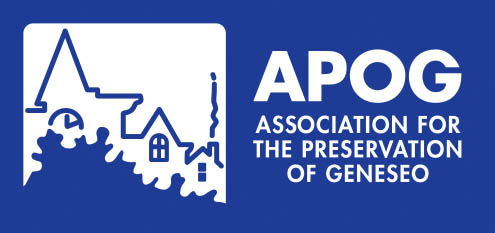125 Main Street
The Conrad Building
2008
This large brick building was built in 1851 as a public concert hall, the gift of James S. Wadsworth. The auditorium, on the second floor of this new building, was 20 feet high, 60 feet long, 38 feet wide and could accommodate up to 500 people. Eleven windows were arranged to give “perfect ventilation.” The cultural and social needs of the area were served by this hall. Local talent as well as performers from afar, including Mark Twain and Horace Greeley, entertained audiences there during the next 50 years. Dances and other parties made it a social headquarters and the annual ball of the Genesee Valley Hunt was held in this building for several years. In 1861, an addition was made to the rear for a music school for the use of Temple Hill Academy.
The first floor housed a variety of enterprises. The Geneseo Valley National Bank, organized in 1851, began business here and remained until a new structure (currently Key Bank) was erected in 1865-66. A succession of merchants had shops in these rooms. The hum of the Livingston Republican press machines could be heard there from 1877 until 1889 when they were moved to a new location.
After the development of the Geneseo Normal School and the erection of the Geneseo building in 1908, with its rooms designed for social, political and cultural purposes, the use of the hall decreased.
c. 1947
Courtesy of Livingston County Historian
Temple Hill Academy had been abandoned when the Normal School began attracting students from a wide area to its excellent facilities. In 1921, alterations began transforming the structure into Cole’s Garage and an automobile salesroom. Hart’s Food Stores took over in 1952 and six years later the building was sold to Lowell Conrad.
In 1985, Mr. Conrad engaged Paul Hitchcock of Piffard to restore the exterior. The roof was repaired, the overhangs rebuilt, the
brick pointed up and the building repainted. The fine two-story brick building is a handsome landmark. In scale and proportion, it reflects the Greek Revival period while some details, such as the window lintels, show Gothic Revival influence.




